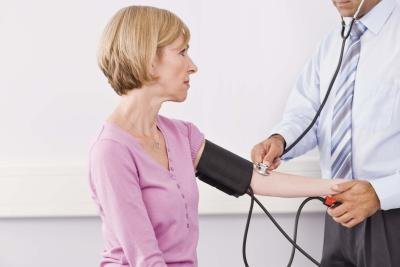Hemophilia

What is hemophilia?
Hemophilia is a hereditary disease that causes a violation of the blood clotting process. The blood of people with hemophilia does not clot normally. Bleeding can occur spontaneously or after trauma.
The disease exists in 2 forms – A – classic and B. In both forms, the cause is a defective gene. The defective gene prevents the production of one of the protein factors of blood clotting. The result is the formation of an unstable clot or no clot at all.
The disease can also be in a mild form, in which bleeding occurs only in case of serious trauma. In the moderate form, there can rarely be spontaneous bleeding, but malign trauma or surgery occurs.
In more severe cases, spontaneous bleeding occurs, i.e. the bleeding is not the result of any trauma. Spontaneous bleeding can occur in any part of the body, but it usually occurs in the joints of the fingers, wrists, feet and spine.
What are the symptoms of hemophilia?
- If a young child has hemophilia, the bleeding starts when they fall. Due to the instability of the coagulation and a very slight pressure can cause repeated bleeding.
- Blood in the urine – hematuria, is a common condition in this disease. In most cases, individual blood cells fall into the urine and are not visible to the naked eye;
- Hematuria, where blood is visible in the urine, is also a common condition and may indicate a urinary tract infection blister.
- Hemorrhages in the muscle tissue or joints that are not visible to the patient. They are characterized by pain and swelling in the area of the hemorrhage.
- Hemorrhage in the muscle usually occurs after trauma. Hemorrhages most often occur in the calf, thigh, and armpit.
- Bleeding in the joints is the most crippling manifestation of hemophilia. The condition most commonly affects the knees, followed by the elbow, ankle, shoulder, and wrist.
- A warm, tingling sensation is felt before the pain and swelling of the joint begin. The degree of swelling does not correspond to the volume of hemorrhage. Bleeding can be significant and swelling very little.
- Hemorrhage in the central nervous system can be life-threatening. It usually only happens in severe cases. But it can also occur in the moderate and mild form of the disease. Bleeding can occur in or around the brain itself – intracranially or in the spine – intraspinally. Trauma to the head or spine is usually the cause of such hemorrhage. The injury may be quite minor.
- Adults are more prone to spontaneous, that is, without injury, intracranial bleeding. This condition is characteristic of more than half of the cases of hemophilia.
- Headache, nausea and vomiting often accompany bleeding in the brain.
- Back pain and even Paralysis may accompany spinal hemorrhage.
Hemophilia Treatment
The goal of treatment is to stop the bleeding. Doctors stop bleeding either by overcoming deficiencies in blood clotting factors or by helping blood clot.
The drug Desmopressin, a synthetic form of the pituitary hormone vasopressin, can temporarily raise protein factor 8 levels. But it will not be effective in severe cases or in hemophilia type B.
Aminocaproic acid and tranexamic acid promote clotting by inhibiting the conversion of plasminogen to plasmin. These medications are used only for bleeding in the oral cavity in both forms of the disease.
When determining which medications to administer, the patient’s weight, the location of the hemorrhage, and which of the protein clotting factors have low levels are taken. In hemophilia A – factor VIII, and in B – factor IX.
How to protect ourselves?
Although hemophilia is a serious and incurable disease, there are measures and ways in which we can protect ourselves from the dangerous consequences and complications associated with it.
-
Regular medical control: For people suffering from hemophilia, regular examinations and consultations with hematologists are essential. They can monitor the levels of blood factors and take the necessary measures if necessary.
-
Physical activity: Physical activity can improve the condition of the muscles and joints that often suffer in hemophilia. However, it is important to avoid overexertion and risky sports that can cause injuries.
-
Prophylactic treatment: Some patients with hemophilia undergo prophylactic treatment with injections of the relevant blood factor to prevent spontaneous bleeding.
-
Injury Prevention: Patients with hemophilia should try to avoid injuries. This includes avoiding risky activities, wearing protective gear, such as hard hats and knee pads, and carefully maintaining personal hygiene.
-
Support and awareness: It is important to provide support and good information to patients and their families to understand how to cope with hemophilia and how to protect themselves you are out of danger.
In conclusion, hemophilia can be challenging, but with the right care, education, and support from those around you, patients can lead more normal lives and protect themselves from bleeding and complications.
Relationship with medical professionals and self-care play a key role in this process, which aims to improve the quality of life of those affected by this disease.
Also, it is important to emphasize that hemophilia should not deprive patients of a fulfilling life. They can work, study, have fun and pursue their goals. This requires extra effort and attention, but it is possible.



